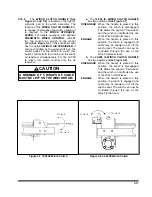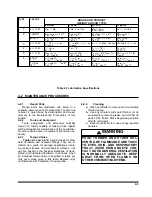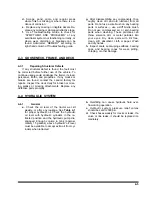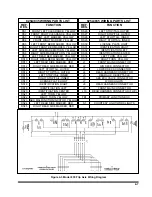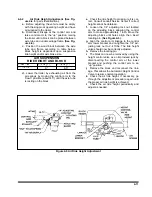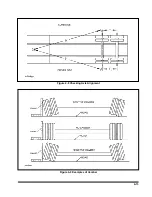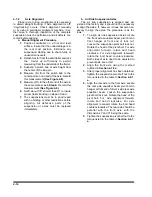
4-5 ELECTRICAL SYSTEM
4-5.1
Maintenance of the electrical system
consists of inspection and minor servicing.
Any wire, connection or electrical component
showing signs of corrosion, wear, breakage
or unraveling must be repaired or replaced.
(See Figures 4-2 and 4-3 for electrical wir-
ing diagram)
4-5.2
Frayed or unraveling wire must have the
defective section removed and replaced with
wire of the same color and gauge. Seal all
connections and insulate.
4-5.3
Corroded terminals must have the corro-
sion removed, source of corrosion neutral-
ized and the terminals resealed, protected,
and insulated.
4-5.4
Fuse or circuit breaker burn-out or
blow-out usually indicates an electrical
short-circuit, although a fuse can occasion-
ally fail from vibration. Insert a second fuse
or reset the breaker. If this fuse immediately
burns out or the breaker trips, locate the
cause of the electrical short and repair.
4-5.5
A light that repeatedly burns-out usually
indicates a loose connection, poor system
ground, or a malfunctioning voltage regula-
tor. Locate the source of the problem and re-
pair. System grounds must be grounded to
bare metal surfaces. Paint, grease, wax, and
other coatings act as insulators. Replace-
ment lamps must be equivalent to the factory
installed lamp.
4-6 SUSPENSION MAINTENANCE
4-6.1
See
for Tandem
Axle and Tandem Axle W/ Flip Axle Air Ride
Suspension drawings.
a.
Physically check all nuts, bolts, and air line
fittings for proper torque (see torque chart be-
low).
AIR SUSPENSION TORQUE CHART
Size
1-1/8"-7
1/2"-13
*3/4"-16
3/4"-10
Torque in
Ft. Lbs.
**800
or
550
35
35
150
* Air Spring Connections Only.
** First number listed is torque required if bolt
head designated with Neway; Second number
listed is torque required if bolt head designated
with Holland Neway.
b.
Check all other suspension components for
any sign of damage, looseness, wear or
cracks.
c.
With trailer on level surface and air pressure
in excess of 65 psi, all air springs should be
of equal firmness. The height control valve on
right side of front axle controls all air springs
on tandem axle suspensions.
d.
The height control valve on right side of
center axle controls ride height for all air
springs on triple axle suspension.
4-8
Summary of Contents for 825A
Page 8: ......
Page 12: ......
Page 14: ...3 2 Figure 3 1 Model 825 Trailer Terminology Figure 3 2 Service Hookups...
Page 18: ...3 6 Figure 3 3 Hydraulic Controls...
Page 22: ...3 10 Figure 3 5 Swingout Outrigger Platform Extension...
Page 24: ...3 12 Figure 3 6 Gooseneck Attachment to Frame...
Page 34: ......
Page 36: ...4 2 Figure 4 1 Lubrication Points...
Page 40: ...4 6 Figure 4 2 Model 825A Wiring Diagram...
Page 43: ...4 9 Figure 4 4 Tandem Axle Air Ride Suspension System...
Page 44: ...4 10 Figure 4 5 Tandem Axle W Flip Air Ride Suspension System...
Page 47: ...4 13 Figure 4 8 Checking Axle Alignment Figure 4 9 Examples of Camber...
Page 52: ...4 18 Figure 4 12 Axle and Brake Assembly...
Page 59: ...4 25 Figure 4 18 Mounting Tires and Wheels Figure 4 19 Stud Tightening Sequence...
Page 69: ...NOTES 5 9...
Page 70: ......


